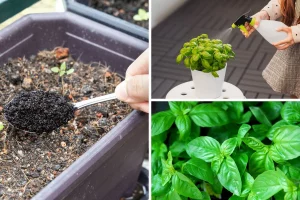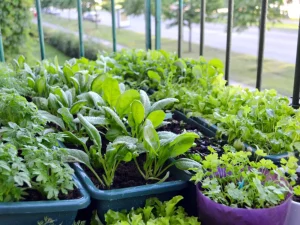In the ever-changing world of gardening, people are always looking for new ways to make the most of their land, increase productivity and encourage environmentally friendly practices. One of the very popular methods is organic cultivation in raised beds. This new way of working not only improves your garden figuratively and literally, but also offers you many other benefits, from better dirt to better use of space. In this complete guide, we’ll learn about the art and science of organic raised bed gardening. We’ll learn how it works, what its benefits are, and how it can help gardeners grow healthy, successful gardens.
How to Understand Raised Bed Gardening?
Essentially, raised beds are a style of gardening that involves growing plants in the ground above the ground. These beds can be made from different materials, such as wood, stone or even recycled materials, to create a limited growing space. Organic raised bed gardening takes this concept one step further, using natural, safe methods to replace chemical fertilizers and pesticides.
Benefits of Raised Bed Gardening:
Better Soil Quality
Gardeners can fill raised beds with high-quality, nutrient-rich soil. These soils can be amended to meet the needs of each plant for optimal growth. In addition, because the bed is raised and well-drained, water does not collect and air can enter the plants.
Better Pest Control
Raised beds can be protected from snails, slugs and small mammals with netting or row covers. This natural method of eliminating pests reduces the need to use chemicals, making the garden more environmentally friendly.
Most Efficient Use of Space
A raised bed can be a great use of space, especially if space is limited. Carefully planned layout allows them to be planted closer together, increasing the garden’s yield. This ensures good use of space, which is especially important in cities where garden space is limited.
The Growing Season is getting Longer
Raised beds have better drainage and warm the soil faster in the spring because they are higher. This extends the growing season so gardeners can start planting earlier in the year and let the plants grow until fall.
Access and Maintenance Easier
The height of most raised beds allows gardeners to easily work in them without injuring their backs or feet. The closed nature of these beds prevents the soil from becoming too hard, making maintenance work such as weeding and watering easier.
How to Create an Organic Raised Bed Garden:
Choose the Right Place
Choose a location for your raised garden that receives at least 6-8 hours of direct sunlight per day. Most plants will not grow well without adequate sunlight. Also make sure that water is easily accessible.
Assembling the Bed
Use untreated wood, concrete blocks or other acceptable materials to build raised beds. Choose a size that allows you to easily reach the bed without stepping into it, which is usually about 4 feet wide. Bed heights can vary but are usually between 12 and 24 inches.
A Good Soil Mix
Mix equal parts compost, organic waste and garden soil to create a high-quality soil mix. This mixture is rich in nutrients and provides a good place for plants to grow. To further improve the soil, you can add compost tea or manure that has been lying around for a while.
Planting together with Others
Take advantage of the idea of placing items on a loft bed. Some plants help each other grow better or repel pests when grown together. For example, placing basil near tomatoes will make them taste better and keep insects at bay so the two plants work well together.
How to Mulch and Water
Use organic mulch such as straw or compost to retain moisture in the soil, keep the soil at the right temperature and prevent weeds from growing. Mulch also improves the soil over time as it breaks down. Water the raised bed well to ensure that the water reaches the roots of the plants. Installing a drip irrigation system allows you to water your plants quickly and evenly.
Natural Pest Control
Use natural methods to keep pests away from your raised beds. Beneficial insects, companion plants, and neem oil are all natural options that work well. Check your plants regularly for signs of pests and diseases and treat them immediately to keep your garden healthy.
Conclusion:
Organic gardening is a great example of how new ideas and old methods can work together to provide sustainable solutions for the modern gardener. By landscaping your garden, you create a place where plants grow well and pests are controlled naturally. This allows everyone to enjoy gardening, no matter how much space he or she has.
As you begin to learn about organic gardening, remember that organic principles are at the heart of this method. By taking good care of the soil, growing other plants and using environmentally friendly methods, you can not only improve your garden, but you can also help make the world a greener. Each raised bed is a testament to the beauty of organic harmony, where a gardener’s hands and knowledge of nature come together to create a thriving, sustainable oasis – a raised garden where the endless possibilities of organic growing are realized.
FAQs:
1. How do raised beds improve soil quality, and what organic practices can gardeners implement to ensure optimal plant growth in these raised gardens?
Discover the science behind improving the soil quality of seedbeds and discover organic techniques for naturally enriching soil. Understanding the dynamics of raised soil is critical to successful organic gardening.
2. What are the most important factors to consider when building raised beds for your organic garden? How can gardeners choose eco-friendly materials for their raised bed structures?
Dive into the construction aspects of raised beds, with an emphasis on the use of environmentally friendly materials. Know the correct size and height to ensure comfort and accessibility for the gardener. Discover how organic principles extend to the physical structure of your garden.
3. How does organic gardening extend the growing season, and what strategies can gardeners use to maximize the productivity of their gardens year-round?
Learn about the benefits of raising beds for an extended growing season and explore techniques to take advantage of this benefit. Discover methods of crop rotation, succession planting and choosing the right crops for different seasons to ensure year-round productivity of organic gardening.
4. What is the most effective natural pest control method for raised bed gardens? How can I optimize combination planting in the limited space of raised beds?
Discover organic solutions for pest control in raised beds, focusing on natural enemies and supporting planting techniques. Discover how pear plantings can fit strategically into the compact environment of raised beds, growing a harmonious ecosystem in a limited space.
5. How do you adapt raised bed gardening for specific plants or crop types? What organic practices are essential for maintaining the long-term health and productivity of a raised bed garden?
Delve into the specialized aspects of raised bed gardening, focusing on a single plant or crop. Discover tailor-made ways to grow vegetables, herbs or flowers in raised beds. Additionally, learn about basic organic practices for long-term sustainability and ensure the continued health and productivity of your raised bed garden.



